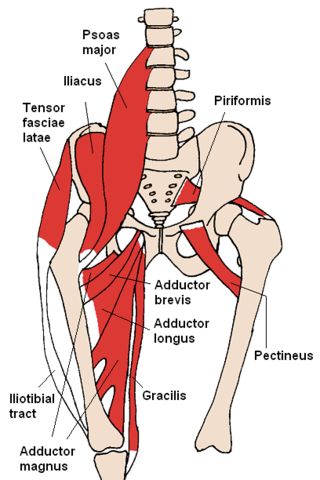Top Qs
Timeline
Chat
Perspective
List of flexors of the human body
From Wikipedia, the free encyclopedia
Remove ads
In anatomy, flexor is a muscle that contracts to perform flexion (from the Latin verb flectere, to bend),[1] a movement that decreases the angle between the bones converging at a joint. For example, one's elbow joint flexes when one brings their hand closer to the shoulder, thus decreasing the angle between the upper arm and the forearm.
Remove ads
Flexors
Summarize
Perspective
Upper limb
- of the humerus bone (the bone in the upper arm) at the shoulder
- of the forearm at the elbow
- of carpus (the carpal bones) at the wrist
- of the hand
Lower limb
Hip

The hip flexors are (in descending order of importance to the action of flexing the hip joint):[2]
- Collectively known as the iliopsoas or inner hip muscles:
- Anterior compartment of thigh
- Rectus femoris (part of the quadriceps muscle group)
- Sartorius
- One of the gluteal muscles:
- Medial compartment of thigh
Without the iliopsoas muscles, flexion in sitting position is not possible across the horizontal plane.[2]
Thigh
Other
Remove ads
See also
References
Wikiwand - on
Seamless Wikipedia browsing. On steroids.
Remove ads
